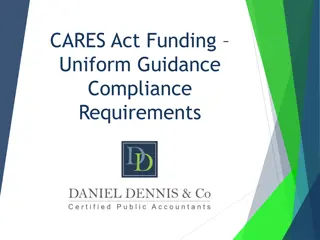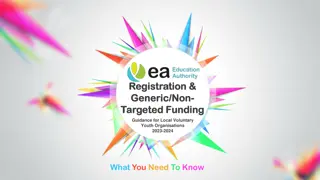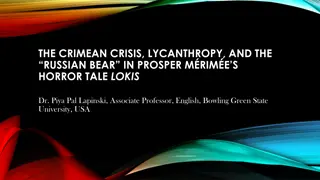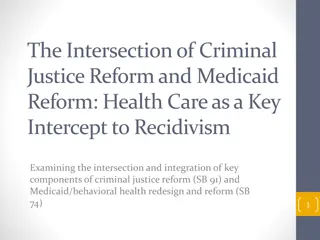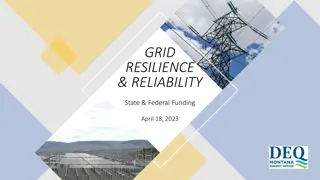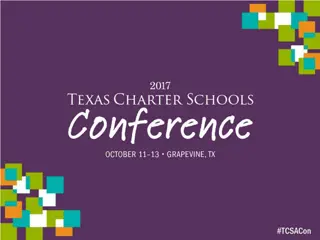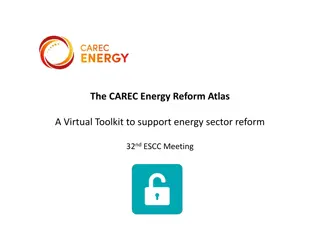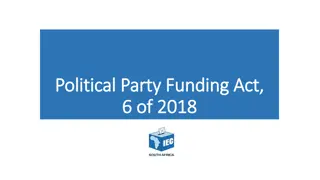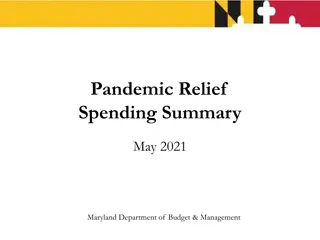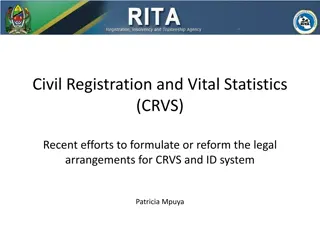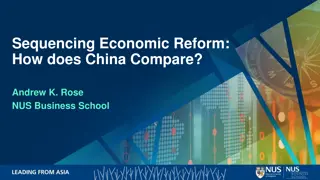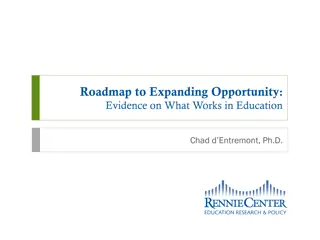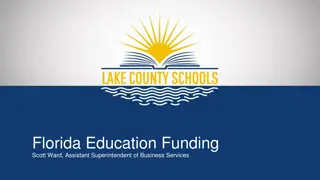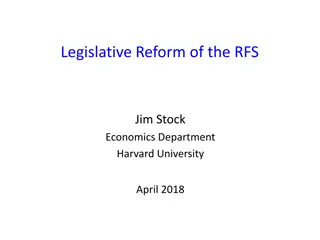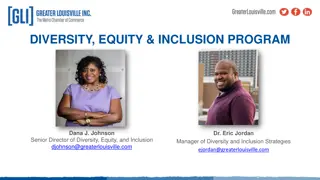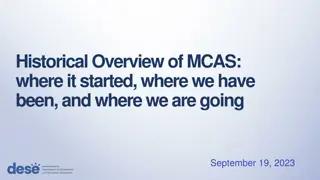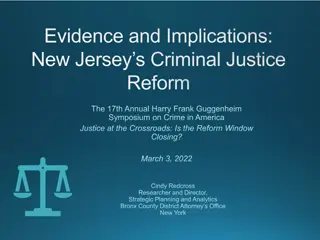Understanding the PROSPER Act: Education Reform and Funding
The PROSPER Act (H.R. 4508) aims to promote real opportunities and success through education reform. Introduced by Reps. Foxx and Guthrie, key themes include workforce needs, program simplification, and funding adjustments. The bill's impact on institutional eligibility, data transparency, and other aspects of higher education is discussed in detail.
Download Presentation

Please find below an Image/Link to download the presentation.
The content on the website is provided AS IS for your information and personal use only. It may not be sold, licensed, or shared on other websites without obtaining consent from the author. Download presentation by click this link. If you encounter any issues during the download, it is possible that the publisher has removed the file from their server.
E N D
Presentation Transcript
Explaining the PROSPER Act (Plus Taxes and Funding!) December 18, 2017 D a v i d B a i m e Senior Vice President of Government Relations and Policy Analysis J i m H e r m e s Associate Vice President of Government Relations
PROSPER Act General Promoting Real Opportunity, Success and Prosperity Through Education Reform (H.R. 4508) Introduced Friday, December 1 by Ed/Workforce Chair Rep. Virginia Foxx (R-NC) and Higher Education Subcommittee Chair Rep. Brett Guthrie (R-KY) 542 pages Approved December 12 by Ed/Workforce Committee on Party-Line Vote Rep. Foxx Plans to Bring Bill to Floor in Early 2018 AACC Wrote to Committee on Introduced Bill, Did Not Support No Companion Senate Bill Yet, Legislation of Some Type Expected in 2018
PROSPER Themes Reforming the HEA, Not Merely Reauthorizing As per Foxx s opening statement Emphasis on Meeting Current Workforce Needs Simplification and Streamlining of Programs Unfunded Programs are Eliminated, Authorization Levels are Set at Current Levels or Reduced Bill not yet scored by CBO Tilt Towards Newer Providers, Away from Traditional Higher Education
Ed/Workforce Mark-Up of H.R. 4508 Marathon Affair More than 60 amendments, most Democratic Only 2 Democratic amendments adopted Democrats Repeatedly Criticized Lack of Time to Digest Bill Foxx produced countervailing examples when Dems controlled House Votes Overwhelmingly Party-Line Some crossovers on less prominent issues Exchanges Relatively Muted Given Context
Institutional Eligibility Single Definition of Institution of Higher Education For-profits given same statutory standing as traditional higher education institutions AACC had successfully opposed in previous reauthorization Proprietaries denied access to Titles III and V Unaccredited Providers May Partner With Eligible Institutions to Deliver 100% of Program New Short-Term Program Eligibility for Title IV Programs 300 599 clock hours Could draw in new institutional providers (if accredited) State Licensure Applies Only in State in Which College is Located In contrast to Obama regulations
Data/Transparency New College Dashboard Created to Replace Existing College Navigator Eliminates Student Right to Know and Other Disclosures Requires colleges to link to Dashboard on websites Dashboard has 4 New ED Outcomes Measures Cohorts Grad Rates Disaggregated at 100%, 150%, and 200% of Normal Time, PLUS 300% for Community Colleges Debt Levels by Program
Data/Transparency Program Completer Earnings at 5 and 10 Years After Graduation Data derived from matching Title IV recipients, similar to gainful employment ED Feasibility Study Mandated on Ability of National Student Clearinghouse to Operate a Comprehensive Student Data System No Unit Record Data System Created Glancing effort made at committee markup
General Student Aid Provisions New Eligibility for Short-Term Programs (300-599 hours) Major benefit for CC students Not AACC s original position but better in some respects JOBS Act covers 150 hour programs w/ more limited eligibility Ability-to-Benefit Students Qualify for Title IV Aid After Accumulating Six Credits Expansion of current policy, which is applied to career pathways students only Aid Must Be Delivered Like a Paycheck In weekly or monthly installments Up-front costs can be considered
Pell Grant Program Bill Sustains Current Student Eligibility Ongoing AACC priority Bill Retains Lifetime Limit of 12 FTE Semesters Not 14 as AACC proposed Bill Creates Pell Grant Bonus of $300/year for Students Who Take 15 Credits 12 credits still considered full-time Maximum Grant Not Indexed to Inflation Funding source/offset problematic ED Must Report to Congress on Program Spending Trends
Federal Work-Study (FWS)/SEOG FWS Funding is Doubled New Formula for Distributing Funds to Campuses Could Benefit CCs Priority Given To Work-Based Learning Community Service Requirement Eliminated Greater FWS Share Can Be Used for Private Sector Jobs SEOG is Eliminated CCs currently receive 24% of funds Part of One Grant, One Loan, One Work program mantra
ONE Loans New Federal ONE Loan Created Current Need-Based, In-School Interest Subsidy Eliminated Two Repayment Plans Standard 10-Year Income-Based IBR Plan: Total Payments Capped at Ten Year Standard Amount No Loan Forgiveness
Repayment Rates and Program Eligibility Institutional Cohort Default Rates (CDR) Eliminated and Replaced by Program-Level Repayment Rates Student is Counted as Being in Repayment if < 90 Days Delinquent If Program Has Fewer Than 30 Borrowers, 3 Year Data are Used Programs That Have Repayment Rates < 45% for Three Consecutive Years Lose Eligibility Participation Rate Index Concept Applied Programs where < 20% of eligible students borrow would get break Impact on CCs Uncertain Likely to Be Negative in Some Cases Given Sheer Number of Programs
Institutional Loan Discretion Institutions Given New Authority to Prorate or Limit Loan Amounts in Defined Circumstances Longstanding AACC priority Reduced amounts can be provided to account for: Starting salary for typical occupations (BLS) in relation to debt (as in FAST Act) Less than full-time enrollment Credential level Grade level of student seeking a loan Must Be Applied in Same Manner to Similarly Situated Students Student May Request Waiver
Institutional Aid Programs Title III-A: Strengthening Institutions Eliminated Without stated rationale Staff have indicated that $ were used to fund new apprenticeship program New Graduation Rate Requirement of 25% of Normal Time to Completion (Including Transfers) Applied to Hispanic-Serving Institutions, Predominantly Black Institutions, Asian American-Serving Institutions, and other MSI programs Not applied to HBCUs and Tribally-Controlled Institutions These are formula grants
Apprenticeship Program (Title II) New Title II Apprenticeship Title Replaces Teacher Training Programs Creates New Apprenticeship/Work-Based Learning Program Not limited to registered apprenticeships Eligible Recipients Must Include Institution and Industry Partner College would not necessarily be lead partner For-profit colleges eligible 50% Match Requirement Funds Could Cover 50% of Wages No Direct Funding for Education Funds for equipment and curriculum development
Accreditation Ten Previous Requirements for Agency Standards Reduced to One: Student Learning and Educational Outcomes Represents refocusing of federal role Accreditors Assume Significant Responsibilities for Competency-Based Education No Bright Line Requirements in Bill or Assigned to ED A victory
For-Profit Institutions PROSPER Act is a Banner Bill for For-Profits Single definition of institution of higher education Non-eligible provider access to Title IV funds (via eligible institution) Elimination of gainful employment language Elimination of 90/10 rule Elimination of ED regulatory authority on state licensure Rewritten borrower defense statute
Regulatory Policy General Lightening of Federal Involvement ED Barred From Regulating in Controversial Obama Areas State authorization, GE, credit hour General ED Regulatory Authority is Placed Under New Conditions Campus Sexual Assault and Related Policies are Articulated Climate survey required Confidential counselor(s)required MOUs with primary law enforcement entity encouraged One-page document must be produced and given to survivors Institutions decide evidentiary standard in disciplinary proceedings Some Institutional Disclosures Eliminated
Community College Scorecard on PROSPER Act Big Pluses Short-term program Title IV eligibility Improved graduation rate metric Increased Aid officer discretion on loans Big Negatives Risk-sharing Title III-A elimination Reduced investment in students
H.R.1, Tax Cuts and Jobs Act Compromise Bill Headed for Votes This Week House-Passed Provisions Limiting Student Financing Vehicles Were Rejected Elimination of Lifetime Learning Tax Credit and Section 127 were most threatening AOTC Quirk Still Not Fixed Higher Standard Deduction Expected to Lower Charitable Contributions Itemizers reduced from 30% to 5% Limitations on Deductibility of State and Local Taxes Will Likely Reduce Revenues and Pressure Institutional Budgets Deduction capped at $10,000
FY 2018 Appropriations Continuing Resolution Expires December 22 Budget deal not likely before then another CR will be needed House and Senate Pursuing Different Strategies House: CR until Jan. 19 along with Defense appropriations bill, partisan CHIP legislation Senate: CR won t have Defense bill or House CHIP measure May contain new top-line spending numbers May be vehicle for other priorities (CHIP, disaster recovery, etc.) DACA fix not looking likely
What Can I Do? Help AACC Assess Impact of Risk-Sharing Join AACC s Advocacy Advisory Group Email David Baime, dbaime@aacc.nche.edu Join us in New Orleans at AACC s WDI January 30-February 2, 2018 Registration closes on January 5 www.aaccwdi.com Attend AACC s Advocates in Action Meeting Washington, DC June 11-12, 2018
Thank You! Happy Holidays David: dbaime@aacc.nche.edu Jim: jhermes@aacc.nche.edu




